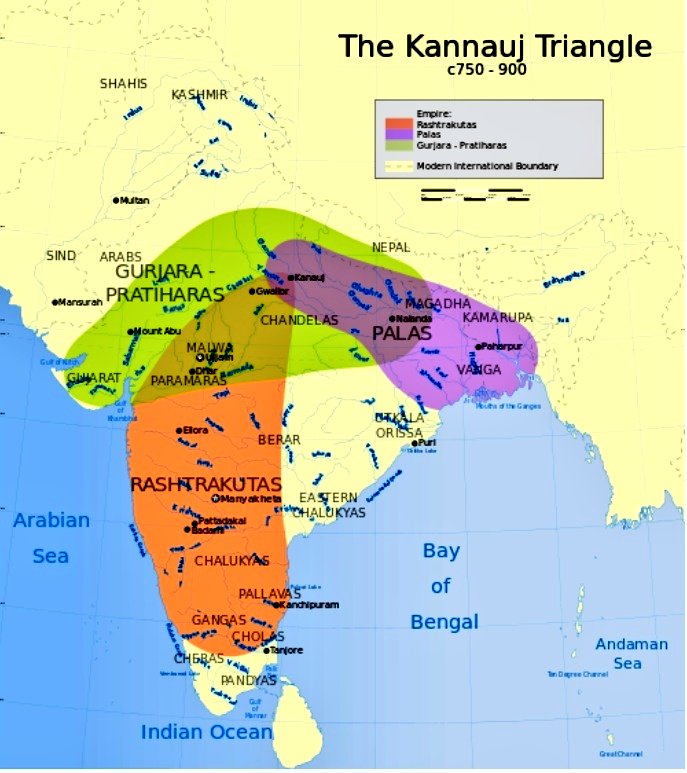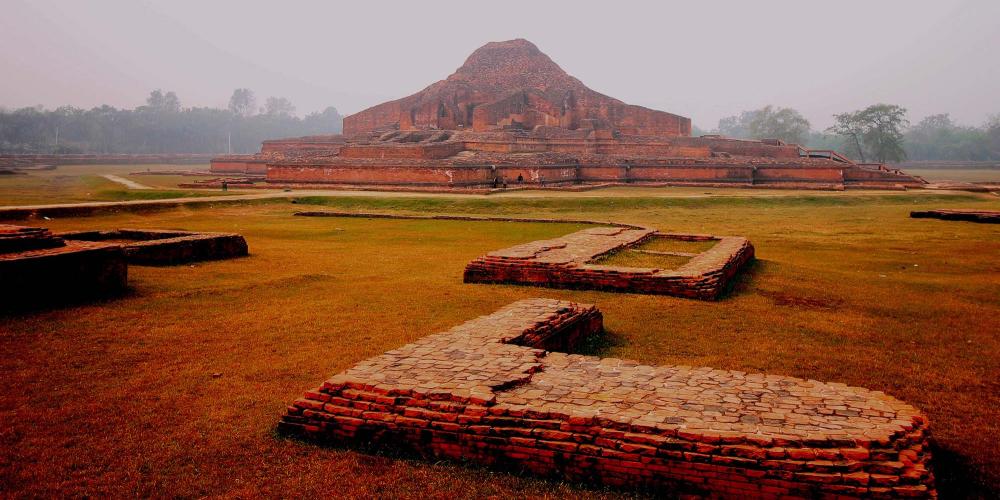History of Pala
The history of Pala’s and their association with Bengal, all initiated in the 8th century with the dwindle and finally the fall of the Shashanka King. King Gopala soon became the foremost King of the Pala Dynasty. He was democratically elected by the people of Gauda (West Bengal) and ruled over Bengal and Bihar. The Pala dynasty originated from Bengal and their rule was also a Golden Era in Bengali history hence the name “The Pala of Bengal’. Reign was started with Gopala and taken forward and expanded by his son Dharmapala and grandson Devapala. They expanded their kingdom throughout north-eastern India including present-day Tibet, Nepal, and Bangladesh. The last powerful Pala ruler was Ramapala who revived the dying empire once again. But the Empire started dwindling with the death of Ramapala and soon declined by the 12th century and was dethroned by reviving Sena Dynasty.

The emergence of the Pala (750 CE)
During the medieval period, the region of Bengal was in a state of anarchy and lawlessness called Matsyanyaya, due to the downfall of the Shashanka king. The people of Bengal elected Gopala I as the new king of Gauda. He became the founder of the Pala Dynasty. He brought an end to this situation making Bengal the fatherland and the place of origin of the Pala.
Struggle for the city of Kannauj
Pala’s struggle for Kannauj was immense. The city of Kannauj was an important city of that time both economically and politically however the rulers of the place were weak. This attracted many rulers of that time to take control over it. The desire to rule over this strong flourishing city resulted in a famous Tripartite Struggle. This struggle was between the Pala of Bengal, Pratiharas, and the Rashtrakutas.

Pratiharas king Vatsraj defeated Palas king and the son of Gopala, Dharmapala. Later, the Rashtrakutas king, Dhruv defeated both. But as Dhruva returned to the south, Palas took control over the city and nominated Chakrayudh (brother of the former king of Kannauj, Indrayudh) as king of Kannauj. This reign of the Pala dynasty over the city was temporary as soon the Pratiharas king Nagabhatta II, son of Vatsraj, defeated Chakrayudh and gained control over Kannauj. However, with the help and alliance of Rashrakutas king Govinda III, Dharmapala regained control over Kannauj.
Golden Era for Bengal
The Reign of Pala is a powerful golden era of Bengali history. The time of their reign brought much prosperity, stability, and architectural achievements to Bengal. They laid the basis for the Bengali language. Many monarchies build. They also laid the basis of many arts and architectural works in Bengal. Charayapada, the first literary works of Bengali poetic volume of the pala reign. West Bengal then called Gauda became the fatherland and the capital of the dynasty.
Pala’s of Bengal and Buddhism
Pala of Bengal were great patrons and followers of Buddhism. Buddhism expanded and flourished a lot during their period. They founded the famous Vikramashila University and revived Nalanda University. These two universities became one of the largest teaching centers of Buddhism. These two Universities allured students not only from all over India but also from Tibet. Third ruler Devpala enlarged Buddhist structures at Sompura Mahavihara and gave permission to erect a monastery at Nalanda to the King of Java (an island in Indonesia) and granted five villages for the maintenance of the same. Even Mahipala I repaired and erected several sanctified structures at Bodh Gaya, Sarnath, and Nalanda. Royal income from hundreds of villages maintained these sacred monasteries.

One of the important figures of classical Buddhism, Atisa worked at Vikramashila University, appointed by Dharmapala, as an abbot. Missionaries from the Kingdom were responsible for the establishment of Buddhism in Tibet. Even today, the essence of their Buddhism is noticeable in Tibet Buddhism and Buddhists.
Hence the Pala of Bengal was the last Buddhist royal power in India and did much for Buddhism.
All images belong to their respective owners.

